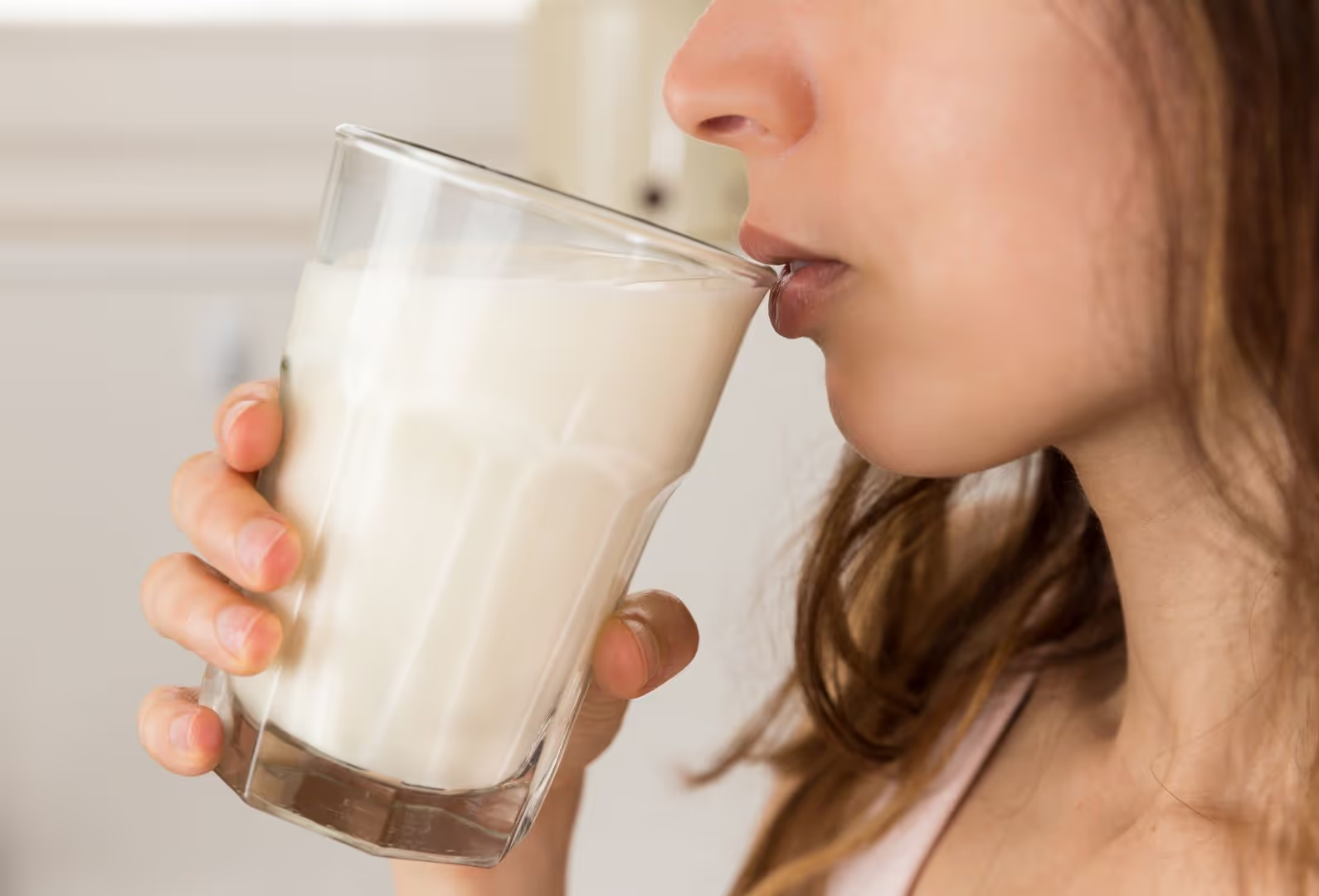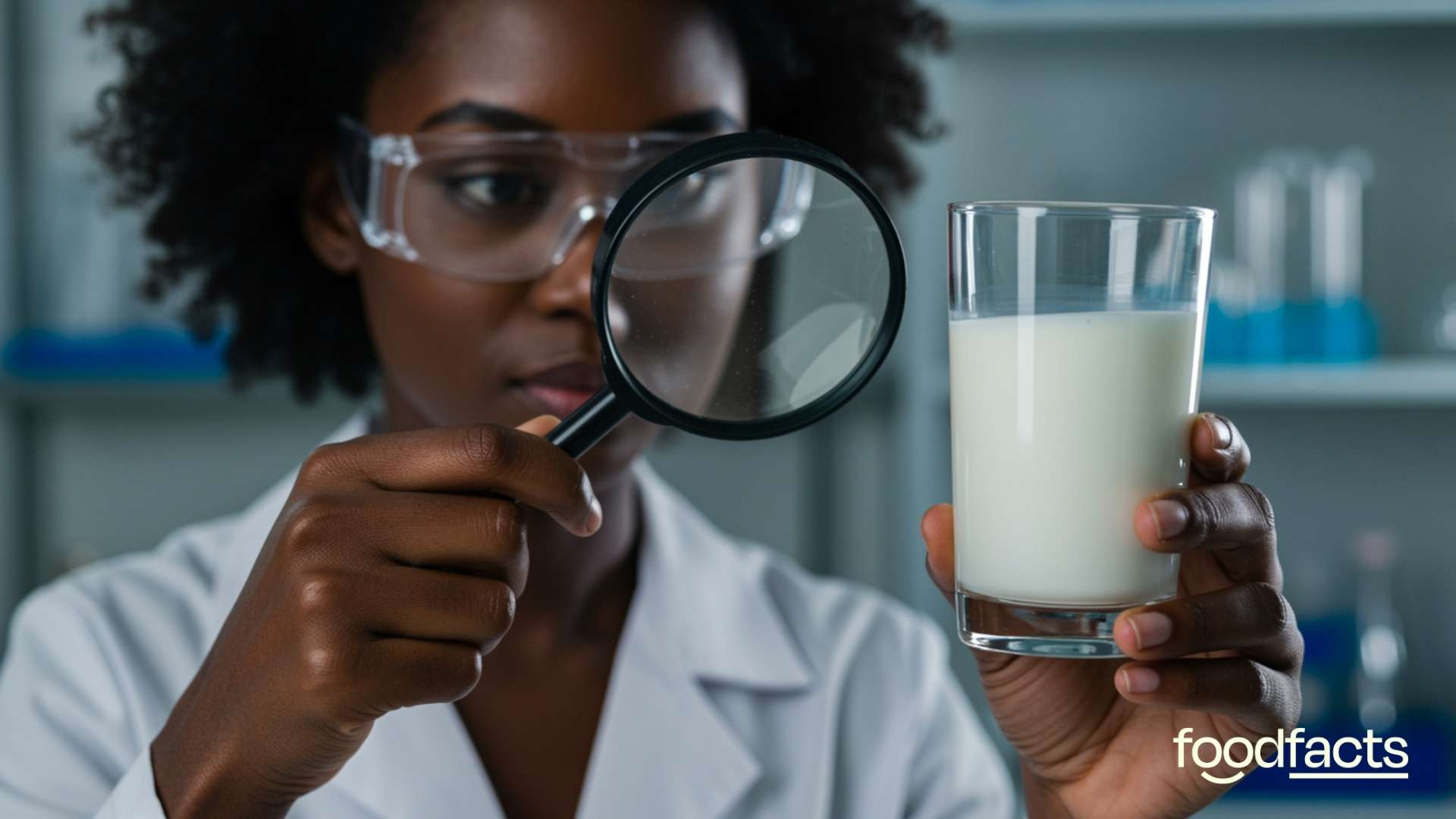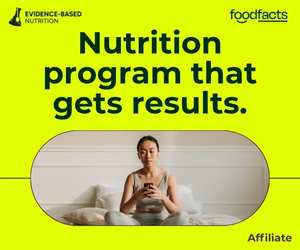
No, your milk isn’t full of pus. But here’s what is in it





Coral Red: Mostly False
Orange: Misleading
Yellow: Mostly True
Green: True
Learn more about our fact-checking policies
People for the Ethical Treatment of Animals, known as PETA, recently posted a video of a dairy farmer milking a cow infected with mastitis across their social media with the caption “Don’t want to eat pus? Don’t consume dairy. It’s that simple.” The idea of drinking pus makes milk less appetizing, but is it correct to say? We dive into this claim to unpack what really happens to milk if a dairy cow is infected with mastitis.
Full Claim: “This isn’t just cow’s milk. It’s pus. Cows in the dairy industry suffer from painful infections like this all the time. A farmer posted this video with hashtags like #farmlife and #dairyfarming - as if it’s normal. Traces of pus from these infections end up in dairy products sold in stores. Ditch dairy today. It’s cruel - and udderly disgusting.”
Somatic cells are not the same as pus. Milk is carefully regulated to ensure safety, and pasteurisation further eliminates harmful pathogens. The claim misrepresents scientific facts to provoke an emotional reaction.
Claims like this one can influence people’s dietary choices through shock and fear, rather than evidence. Understanding how milk is regulated and processed helps consumers make informed, balanced decisions about what they consume.

Beware of bias: Be aware of potential bias in the content, especially in opinion pieces.
What’s the difference between “Pus” and Somatic Cells?
At the center of this claim is a common misunderstanding about somatic cells, which are naturally occurring components of milk. Somatic cells are primarily white blood cells (leukocytes) that cows produce to fight infection, particularly when the udder becomes inflamed—a condition known as mastitis, that often results from poor animal welfare. They also include a smaller proportion of epithelial cells that line the mammary glands. Their presence in milk is not unusual, and in healthy cows, somatic cell counts are typically under 100,000 cells per millileter.
The term “pus” typically describes a thick fluid that contains not just white blood cells but also dead tissue, bacteria, and waste products from the body’s immune response—often seen in infected wounds. While somatic cells are a part of pus, their presence alone does not make a substance “pus.” Conflating the two is a misleading oversimplification that doesn’t reflect how dairy quality is monitored or regulated.
Milk Quality Standards: What the Regulations Say
Regulatory bodies take milk quality very seriously. In the U.S., the Food and Drug Administration (FDA) caps the somatic cell count (SCC) at 750,000 cells per milliliter for milk to be legally sold. Many commercial dairies aim for much lower levels—often under 200,000—to meet industry standards and maintain herd health. In contrast, the European Union, known for its stricter dairy standards, enforces a maximum of 400,000 cells per milliliter. These thresholds are set based on evidence about milk safety and animal welfare, and any milk exceeding these limits is either discarded or diverted for non-food use.
When asked for comment, PETA explained that “The video contains US-specific information. [Somatic cell count level] is calculated using bulk-tank somatic cell counts (BTSCCs), which means that milk from cows with lower somatic cell counts is mixed in a big tank with milk from cows with higher counts than would be allowed to be sold, effectively diluting the pus-heavy milk with less pus-heavy milk. The end result is that every gallon of milk sold will contain some levels of government-allowable somatic pus cells.”

How Are Sick Cows and Contaminated Milk Managed?
The idea that milk is “filled with pus” also ignores how modern dairy processing works. Even if a cow is experiencing mastitis and has a temporarily elevated somatic cell count, her milk is usually identified, tested, and excluded from the supply chain. Farms are required to segregate milk from sick cows, especially if they are being treated with antibiotics, which must be withheld for a specific period to prevent drug residues from entering the food system.
Milk from healthy cows, once collected, is subjected to rigorous testing at processing plants before it can be sold. This includes tests for somatic cell count, bacterial load, and residues of antibiotics or other contaminants. If a batch fails these tests, it is rejected.
Once milk passes these quality checks, it goes through pasteurisation, a standard heat-treatment process that kills potentially harmful microorganisms without significantly altering nutritional content. Pasteurization is a public health safeguard that addresses genuine concerns about pathogens—not somatic cells. In fact, many of the most common foodborne illnesses linked to dairy are associated with raw (unpasteurised) milk, not milk that has undergone standard safety processing.
In short, the claim overlooks the many layers of oversight and quality control in place to ensure that the milk in your grocery store is safe, clean, and free of infectious material.
Why the “Pus in Milk” Myth Persists
So why does the claim persist? Partly because it’s sensational—and fear is a powerful motivator. The “pus in milk” narrative is often used in viral content, usually with the goal of eliciting an emotional reaction. Images or videos paired with the term “pus” evoke disgust, making the content highly shareable—even if the science doesn’t back it up. While some messaging oversimplifies or sensationalizes, it’s rooted in genuine concerns about dairy cow welfare and management practices.

Valid Criticisms of Dairy—But Let’s Stay Accurate
This is not to say that concerns about the dairy industry should be dismissed. There are valid ethical and environmental issues tied to large-scale milk production, including the overuse of antibiotics, the treatment of cows, and the industry’s contribution to greenhouse gas emissions.
As part of their response, PETA notes that “Clinical mastitis, which is responsible for the pus cells that end up in cow’s milk, is prevalent in at least 25% of cows used for dairy in the United States.”
These are complex topics worth discussing. But, relying on inaccurate or decontextualized claims can do more harm than good—it distracts from real issues and can undermine the credibility of broader advocacy efforts.
Better Conversations Start With Better Information
For people considering alternatives to dairy, whether for health, environmental, or ethical reasons, it’s important to make those decisions based on accurate, evidence-based information. Misinformation, even when well-intentioned, can mislead consumers and create unnecessary fear.
By approaching food-related claims with curiosity and a desire for context—not just outrage—we can have more meaningful conversations about where our food comes from and how it impacts us and the planet.
📚 Sources
- Alhussien, M.N. & Dang, A.K. (2018). “Milk somatic cells, factors influencing their release, future prospects, and practical utility in dairy animals: An overview.”
- AMS Dairy Program European Union Health Certificate Program (January 2022). Frequently Asked Questions (FAQ).
- Burke, N., et al. (2021). “A comparison of analytical test methods in dairy processing.”
- Cleveland Clinic. “Pus”
- Council on Dairy Cattle Breeding (2022). “Milk somatic cell count from Dairy Herd Improvement herds during 2021.”
- Dejyong, T., et al. (2022). “An economic analysis of high milk somatic cell counts in dairy cattle in Chiang Mai, Thailand.”
- European Parliament (31 May 2016). “European standard for maximum somatic cell count per ml and the TTIP negotiations.”
- FAO. “Milk processing.”
- Li, N.,et al. (2014). “Role of somatic cells on dairy processes and products: a review.”
- National Mastitis Council (May 2020). “Human Health Risks Associated with High Somatic Cell Count Milk Symposium Summary.”
- Rajala-Schultz PJ, et al (19 August 2004). “Antimicrobial susceptibility of mastitis pathogens from first lactation and older cows”. Vet Microbiol.
- Ruegg, P. L. (2017). A 100-Year Review: Mastitis detection, management, and prevention. Journal of Dairy Science, 100(12), 10381-10397.
- Stanek, P., et al. (2024).. “A Review on Mastitis in Dairy Cows Research: Current Status and Future Perspectives.”
- The Dairy Alliance. “How Dairy Farmers Treat Sick Dairy Cows.”



Foodfacts.org is an independent non-profit fact-checking platform dedicated to exposing misinformation in the food industry. We provide transparent, science-based insights on nutrition, health, and environmental impacts, empowering consumers to make informed choices for a healthier society and planet.
🛡️ Stand Against Nutrition Misinformation
Misinformation is a growing threat to our health and planet. At FoodFacts.org, we're dedicated to exposing the truth behind misleading food narratives. But we can't do it without your support.
Your monthly donation can:
✅ Combat viral diet myths and corporate spin
✅ Support our team of dedicated fact-checkers and educators
✅ Keep our myth-busting platforms running

Was this article helpful?















.svg)
